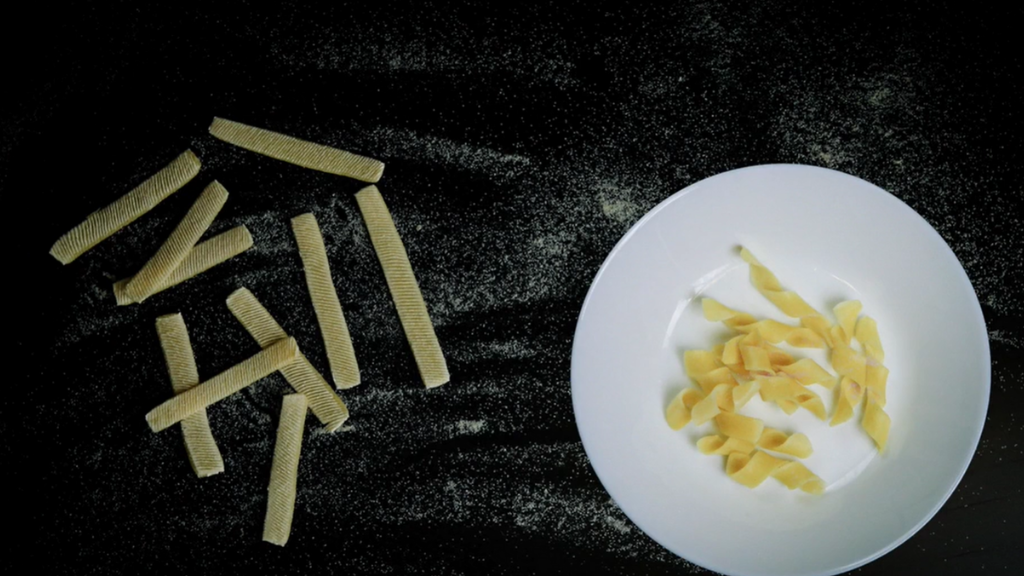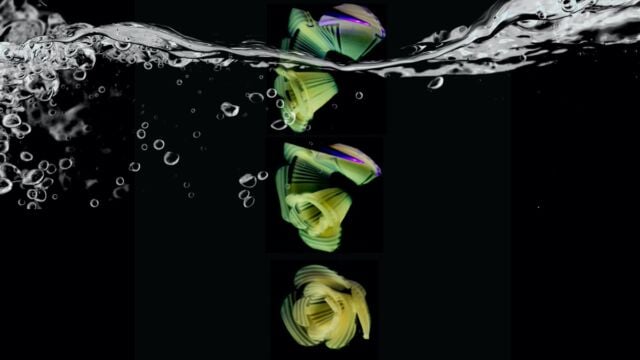Pasta may be one of the oldest dishes known to man, but that doesn’t mean that the innovations have to stop! Food scientists and chefs are always trying to come up with new dishes, and they love the challenge of re-imagining even the most basic ingredients.
There have always been many variations of pasta, and noodles have come in different shapes and sizes since they were invented. More recently, we’ve seen pastas that cater to all dietary needs, including vegan, gluten-free, and low-carb. It is now easy to buy pasta made out of vegetables, beans, and even nuts. The pasta aisle at any major grocer is loaded with options for the discerning buyer.
With all the recent advances in the pasta world, it’s hard to imagine that anybody could come up with a new idea, but that’s just what food scientists have done once again. This time around, they’ve invented a pasta that packs flat and takes shape when you cook it. This is a fantastic product for those who travel or who are simply limited on space for food storage.
Not only does this flat-pack pasta save space in your pantry, but it could also reduce packaging waste by up to 60%, so it’s environmentally friendly as well. If you find the concept of shape-shifting pasta intriguing, read on for some more information.
The Origin
The idea for flat-pack pasta was thought up by Ye Tao, a digital fabrication researcher from Zhejiang University in Hangzhou, China. She drew inspiration from flat-packed furniture, which has been popular for years. She liked that the flat packing helped save both space and resources while reducing the manufacturer’s carbon footprint.
Ye Tao worked in collaboration with Morphing Matter Lab, a scientific research team dedicated to the design of morphing materials. They’ve been at the forefront of developing materials that can be used in everything from food and packaging to clothing and furniture, so flat pack pasta seemed like a natural project for them.
How it Works

The pasta is made only of semolina flour and water – like many other pastas around the world. However, this pasta starts out as flat as possible and is not rolled into the popular shapes we all know and love. Instead, tiny grooves are impressed throughout the flat sheets of pasta at a microscopic level. These grooves are pressed in meticulously designed patterns that cause the noodles to morph into certain shapes when they are cooked.
Only one side has grooves in it, and that side cooks and expands faster than the flat side, which helps the pasta take the specific shapes. The patterns are carefully planned and run through computer models, allowing these pasta scientists to control the shape of the pasta as well as how quickly it expands. The same technique has been used in silicon sheets and may have applications in robotics and in the medical device industry. So, this technology doesn’t just benefit our taste buds, but could provide advantages across a wide range of industries.
The Benefits of Flat Pack Pasta

If you don’t eat a lot of pasta, you may not see the advantage of a little bit of extra storage space. You might only have a couple boxes of noodles in your home at any given time, so this might not pique your interest as much. But there are many benefits that extend beyond those that help the home cook.
From an economic standpoint, this allows pasta manufacturers to save on warehouse space by maximizing their storage. The more pasta you can keep in a smaller space, the less you have to pay for warehousing. You also benefit from less money spent on packaging materials, as you won’t need as many large boxes or bags to contain your noodles.
As the pasta leaves the warehouse, manufacturers save on transportation costs by being able to fit more units on any individual truck. Shipping can be one of the most expensive parts of food production, so any way to save money on that end is huge for these companies. Customers don’t want to pay for packaging, so if a vendor can fill their trucks with more product and less fluff, they are bound to be seen in a favorable light.
This leads to environmental savings as well. Naturally, optimizing space on a truck means that fewer trucks will be needed to deliver product. With fewer shipments required, carbon footprint is reduced. Flat-pack pasta helps cut fuel emissions greatly and decreases the amount of packaging waste exponentially. It can be difficult to stay sustainable when producing massive amounts of food, but this is one way that pasta companies may be able to help the world around them.
If that isn’t enough to convince you, consider that flat pack pasta noodles actually cook faster than regular pasta noodles. From an individual perspective, this saves you time and helps you satiate your appetite more quickly. But it also helps cut down on cooking emissions – and might even help your gas or electric bill! (Admittedly, you’d have to eat a lot of pasta to notice the savings, but if everyone saved just a little bit, it would be a major win in the long run.)
The Verdict
All of these benefits sound great, but they won’t have an impact of the flat pack pasta doesn’t sell. And it won’t sell if it doesn’t taste and feel just like regular pasta. Fortunately, the outcome seems to justify all the effort put into the research and development of this product.
Ye Tao claims that the pasta has an excellent mouthfeel and that you can’t tell the difference in taste from traditional pasta. Other researchers feel the same, so it will be up to the public to decide whether or not they enjoy this version. However, there is a lot of optimism for this shapeshifting pasta, and the science is still in the early stages. With the potential to continue to improve, we are certainly looking forward to getting our hands on some of these noodles!
If you like this post, we think you’ll really like our Cascatelli post.
